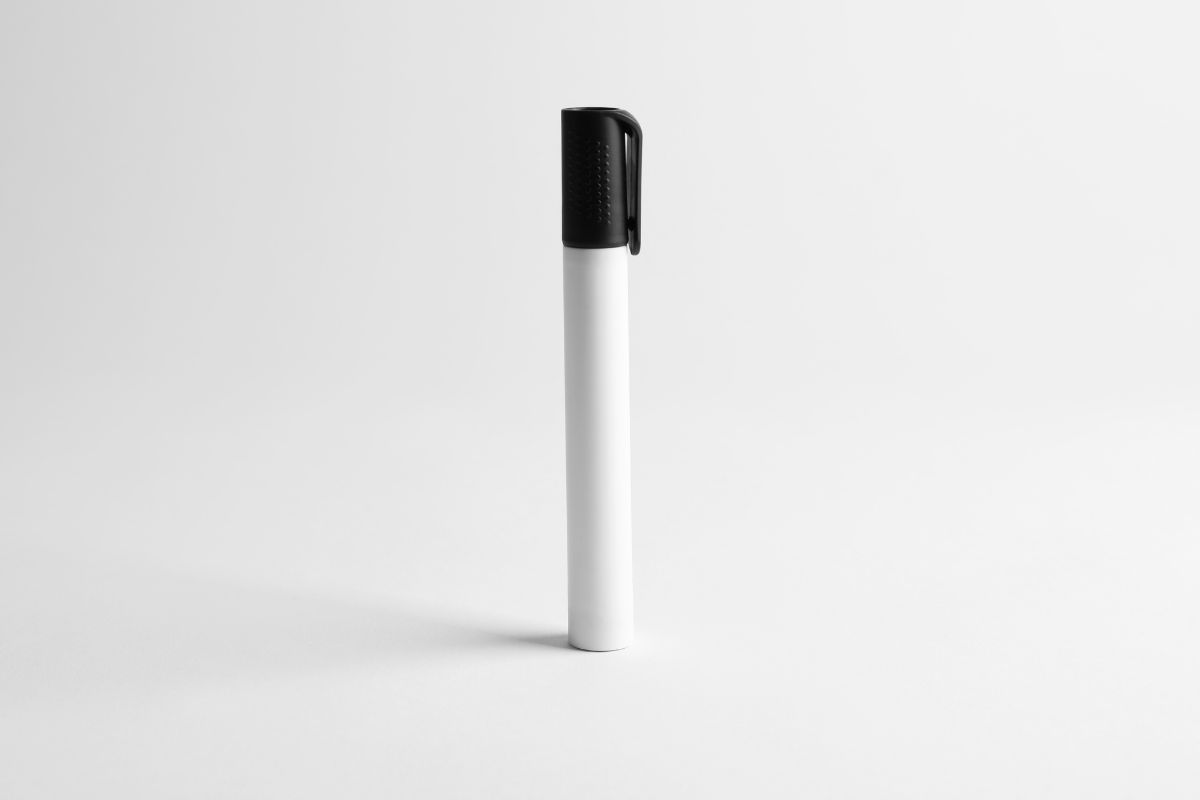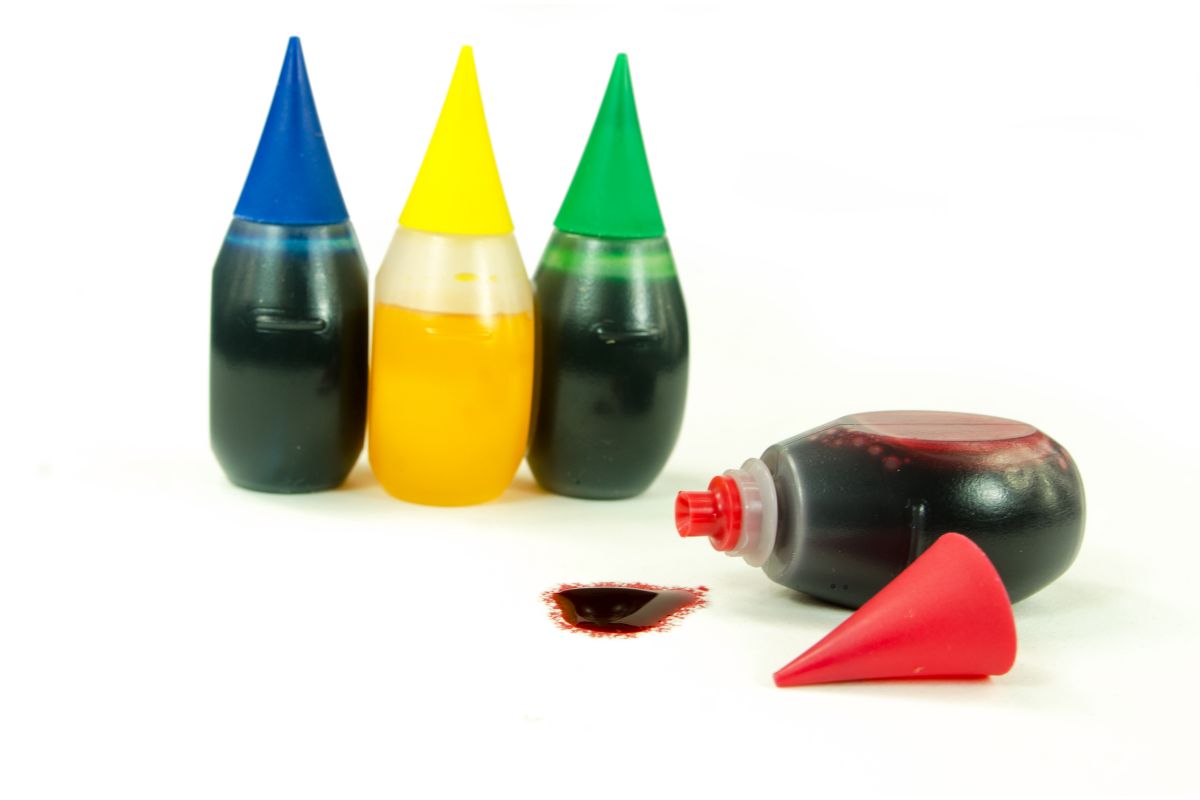Stunning, colorful confectionaries from cakes to cookies are easier to make than ever, thanks to DIY food coloring. But while we see many bright, vivid colors on desserts, it’s quite rare to see more subtle food coloring, particularly white.

This begs the question, does white food coloring even exist and is it easy to make yourself? The answer is yes!
Below, we’ll take you through how to make white food color markers, as well tell you everything you need to know about homemade food coloring. Let’s get into it!
8 Steps To Making Your Own White Food Color Marker
Step 1: Take the foam core out of your marker, and run it under a faucet for a few minutes. Taking the foam core out of your marker may require you giving it a little shake!
Step 2: Before you move onto step 3, the core should be totally white, so it’s best to go for light colored markers, and to avoid black and red markers specifically.
Step 3: Run the marker barrel under the faucet for another few minutes.
Step 4: Make sure the marker tip is also totally white.
Step 5: If you want to skip the next two steps, you can place your foam core into a bottle of white food coloring.
However, if you have only small bottles of white coloring or you don’t have sugar tweezers, place the marker barrel in a plastic bag and wrap foil around it.
Step 6: Remove the marker and put the foam core inside before standing it up in a small glass.
Step 7: Pour white food color over the foam core. To make sure the food color really sinks into the foam core, this may need to be done a few times every 15–20 minutes. Fill up the area around the foam core too and let it rest for a minimum of 8 hours.
Step 8: Slip the foam core inside the marker barrel and replace the cap. Give the marker a shake 5–6 times with the tip facing down.
Store the marker with the tip also facing down and always inspect the tip before you start decorating your sweet treats. If your decorations are smudged, dab the marker with a paper towel.
4 Tips For Making White Food Color Marker
Tip 1: While you shouldn’t use a black or red marker, a yellow marker is probably the most effective and quick to rinse out, taking around 3 minutes.
Tip 2: Start this process straight away, as it takes a lot of patience to allow the core to really absorb all the white food coloring overnight or for 8 hours at the least.
Tip 3: Always inspect the tip before you use the marker. You may notice that there is some excessive coloring on the tip that can make decorations smudged if you don’t gently dab it on a paper towel.
Tip 4: If you would like your decoration to be thick and bright, dip the marker tip into a bowl or a bottle of white food coloring and use the tip like a paintbrush.
4 Tips For Homemade Food Coloring

Tip 1: Natural colorants often have a softer hue than their non-natural counterparts. This is simply because of ratios.
Store-bought food coloring that is highly concentrated just needs a few drops and doesn’t affect the texture of the food by adding a lot of liquid.
Meanwhile, it’s hard to get a genuine red color from beet juice, because the juice isn’t red enough and because most recipes containing beets do not call for the amount of beet juice needed to get the most vivid red possible.
Still, you can create natural food dyes that are concentrated. A couple of drops of beet juice will produce a gorgeous pink color in ice creams and frostings without that distinctive beet flavor.
Tip 2: Because natural, homemade colorants are edible, foods with bright colors tend to have strong flavors. So, as much as you possibly can, try avoiding large amounts of any strongly-flavored foods.
For example, a touch of cinnamon makes for a delicious frosting, but a large amount of cinnamon would be inedible!
Plus, keep your desired flavor in mind so it’s not overwhelmed by the colorants. After all, you don’t want ice cream that tastes like parsley, or buttercream that tastes like paprika!
Again, small doses of these colorants will have the desired aesthetic appeal without compromising the flavor.
Tip 3: Vegetable powders are an excellent way to incorporate bright colors without excess liquid, so if you would like a deep red, you might want to try beet powder instead of beet juice. You can also reduce your liquid to a concentrated syrup.
Tip 4: Dyes containing vegetables can turn brown when baked, when sufficiently oxidized, or when placed in an alkaline environment.
Therefore, vegetable dyes are not effective when baked unless the dough or batter includes sufficient acid medium, such as vinegar, lemon juice, or buttermilk.
We recommend stirring lemon juice and vegetable juice together (for example, beet juice, carrot juice, or parsley juice) in at least a 1:6 ratio if you’re making a red velvet cupcake or a rainbow cake.
To make the dyes as vibrant as possible you can cook the vegetables ahead of time and mix them into a purée instead of using raw vegetable juice.
Can You Buy White Food Coloring?
Yes, white food coloring does exist! Many people are confused about the existence of white food coloring, since most icings tend to be white already. Still, white food coloring isn’t superfluous, especially when you’re baking.
After all, no cook is perfect, and sometimes we want our food to have a bright, white appearance but that’s not the result we get.
So if you want your brights to be a little brighter, some white food coloring can come in handy. The most popular brands of white food coloring include AmeriColor – Bright White Soft Gel Paste, Chefmaster Liquid Whitener Food Color, and Wilton Liquid Color.
What Is White Food Coloring Made Of?
Many white food colorings are made from a mixture containing sweeteners, water, and – crucially – titanium dioxide. This is what gives white food coloring its signature bright hue.
It’s hugely refractive, meaning light basically reflects off it which makes it appear lighter.
This refractive component is what makes titanium oxide a common ingredient in sunscreen. However, white food coloring is still edible in small amounts and won’t hurt you.
Final Thoughts
The concept of white food coloring may seem a little strange at first. After all, the first thing that comes to mind when someone mentions food coloring is something vibrant and almost unnatural.
But white food coloring can actually come in handy. You can use white food coloring to make white hues crisper, or even make other colors brighter by mixing them together.
We hope our article has taught you just how easy it is to make white food color markers at home, to make decorating your cookies or cupcakes simple and precise.
You just need a light-colored marker and some patience and you’ve got a cost-effective way to decorate your desserts at home.
- How To Fill a King Cake With Bavarian Cream - April 15, 2024
- Dealing With Mold on Oyster Mushrooms - April 9, 2024
- What Meat Goes With Pumpkin Ravioli? (Ravishing Ravioli Combos) - March 15, 2024
